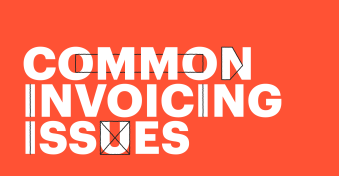Credit memo vs invoice; what’s the difference?
They’re both examples of financial documents that you’re likely to send to your customers at one point or another, but there are key differences between them that it’s important for any business, large or small, to understand.
Here’s what you need to know.
What is an invoice?
An invoice is a document sent to a client by a business, detailing the goods and/or services that have been provided, and what payment is required for them.
Invoices will usually be sent once a product has been delivered or a service has been completed.
However, in some cases, an invoice may be issued at other points during a project, depending on the type and scope of work being undertaken.
An invoice acts as a way of recording details of a sale for the business issuing it, as well as providing a formal way to request payment.
For the client, an invoice will detail how much money they owe, and when and how it should be paid.
If you’re struggling to write invoices for your business, don’t worry. There’s an invoice template for every scenario available to help you along.
What is a credit memo?
A credit memo, sometimes referred to as a credit note or credit invoice, is another type of accounting document that a business can use.
Its purpose is to notify a customer that they have paid more than the value of the goods and/or services they’ve received, and so there is a positive balance in their account.
There are several instances that may lead to a credit memo being issued, such as goods being returned, promotional discounts being issued, or potential errors being identified on an invoice that has already been paid.
For businesses, credit memos assist when balancing accounting records, and with other general bookkeeping tasks.
Credit memo vs invoice: Learn the difference
| Credit Memo | Invoice | |
|---|---|---|
| What does it do? | Notifies the customer of a positive balance on their account. | Notifies a customer of how much they need to pay. |
| When is one created? | If a customer requests a refund if the price of goods/services changes after an advanced payment has been made If there’s a pricing dispute or inconsistencyIf a promotional discount is offered after payment has been made. | When a product or service is sold to a customer. |
| When is it issued? | Usually after a payment has already been made, and other circumstances have altered the amount due. | Whenever the provider wishes to request payment. |
| Who owes who? | The issuer owes the customer. | The customer owes the issuer. |
What to include in a credit memo
There are several elements that should be included in a credit memo in order for it to be effective:
- Heading. Make sure “Credit Note” or “Credit Memo” is included clearly near the top of the document, so your customer knows straight away that they’re receiving a credit, and not another invoice.
- Identification number. This will help when bookkeeping and auditing.
- Date of issue.
- Customer’s name and address.
- Business’ name and address.
- Contact information. Including email address and company website, if applicable.
- Tax ID number.
- The reason that the credit is being applied.
- Quantity of items being credited.
- Product ID or description of the items being credited.
- Individual cost of each product being credited.
- Net amount of credit (excluding taxes).
- Gross amount of credit (including applicable taxes and charges).
What to include in an invoice
Have you ever found yourself unsure of how to write an invoice?
Don’t worry, you’re not alone. As long as you include these key features, your invoices will serve their purpose perfectly:
- Customer name and number.
- Invoice number. This will help to keep your financial documents in order.
- Purchase date.
- Invoice date.
- Product name and number.
- Quantities of each product and their per-unit cost.
- Invoice subtotal, before shipping charges and any applicable taxes.
- Applicable sales taxes.
- Shipping charges.
- Invoice total. A final total in larger print at the bottom of the invoice ensures the customer knows exactly how much they owe.
Keep your customers happy and informed with credit memos and invoices
Credit memos and invoices are two accounting documents that you can use to let your customers know exactly where they stand.
Well informed customers are happy customers, and happy customers are so much more likely to keep doing business with you!
An invoice lets your customers know what they owe, and when they should pay it, helping you to get paid on time.
Credit memos let your customers know that you’re helping them to keep on top of their finances, (as well as showing them that they’ve still got money to spend with you if they so wish)!
Don’t worry if you’re struggling to draft effective credit memos and invoices.
All the best invoicing software should include features and templates that will help you to draw up simple, easy-to-understand financial documents. PandaDoc certainly does!
Frequently asked questions about credit memos and invoices
-
A credit memo is used whenever a customer is left with a positive account balance.
This could be if they return a product and are refunded for it, if work was completed for less than the amount initially quoted, or if there is a mistake on an invoice that isn’t detected until after payment has been made.
-
A credit memo is usually prepared by the accounts payable department of a business, but any seller of goods or services can prepare a credit memo if necessary.
-
Invoices are usually prepared after the sale of goods and/or services.
If a long-term project is being carried out, then invoicing will often happen after completion of the project.
However, in some instances an invoice can be prepared during a project, but before it is completed.
It may be agreed that invoices will be issued after certain milestones have been reached, or at regular monthly or weekly intervals.
Disclaimer
PandaDoc is not a law firm, or a substitute for an attorney or law firm. This page is not intended to and does not provide legal advice. Should you have legal questions on the validity of e-signatures or digital signatures and the enforceability thereof, please consult with an attorney or law firm. Use of PandaDocs services are governed by our Terms of Use and Privacy Policy.


